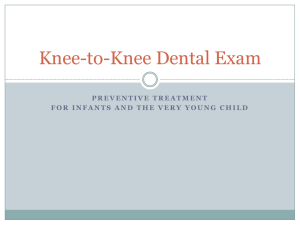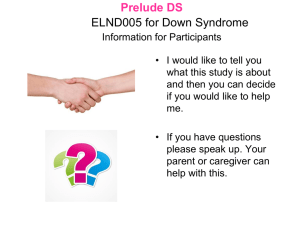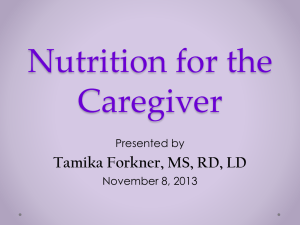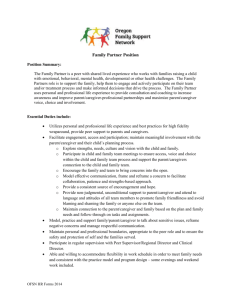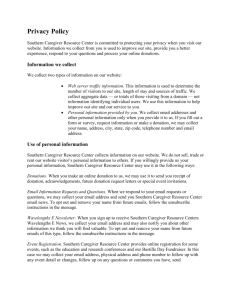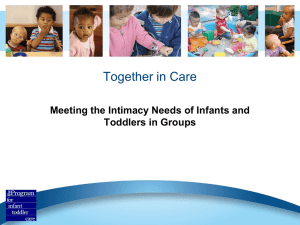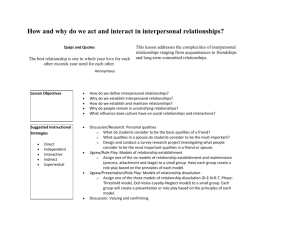Caregiver-Child Interaction Worksheet - COE
advertisement
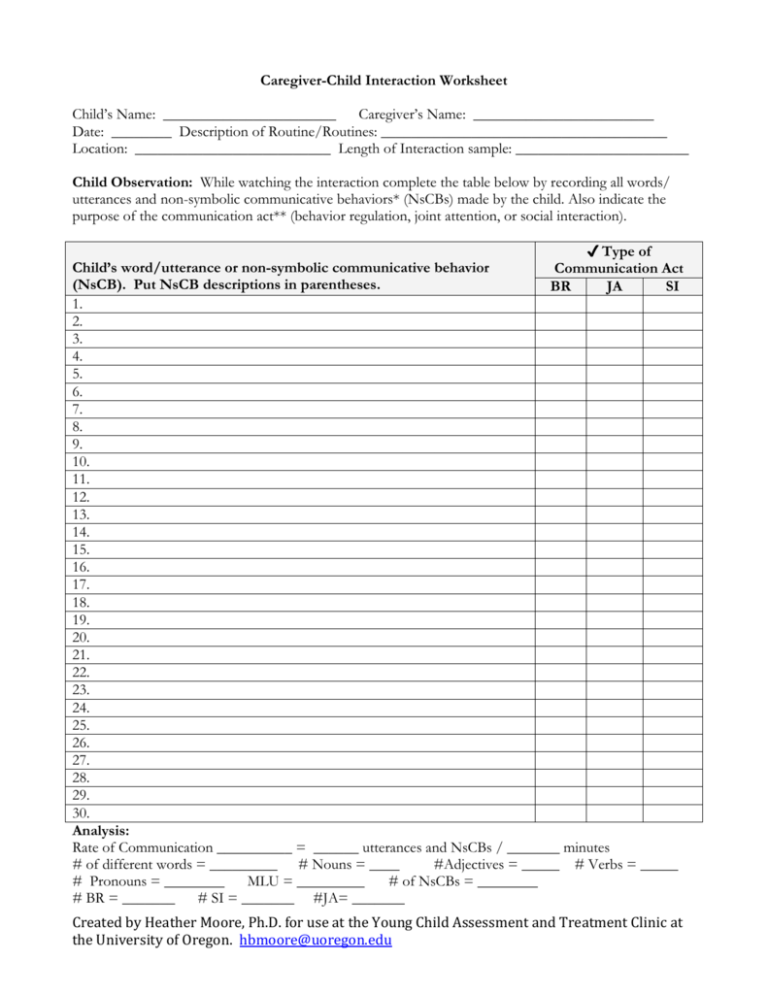
Caregiver-Child Interaction Worksheet Child’s Name: _______________________ Caregiver’s Name: ________________________ Date: ________ Description of Routine/Routines: ______________________________________ Location: __________________________ Length of Interaction sample: _______________________ Child Observation: While watching the interaction complete the table below by recording all words/ utterances and non-symbolic communicative behaviors* (NsCBs) made by the child. Also indicate the purpose of the communication act** (behavior regulation, joint attention, or social interaction). ✔ Type of Child’s word/utterance or non-symbolic communicative behavior Communication Act (NsCB). Put NsCB descriptions in parentheses. BR JA SI 1. 2. 3. 4. 5. 6. 7. 8. 9. 10. 11. 12. 13. 14. 15. 16. 17. 18. 19. 20. 21. 22. 23. 24. 25. 26. 27. 28. 29. 30. Analysis: Rate of Communication __________ = ______ utterances and NsCBs / _______ minutes # of different words = _________ # Nouns = ____ #Adjectives = _____ # Verbs = _____ # Pronouns = ________ MLU = _________ # of NsCBs = ________ # BR = _______ # SI = _______ #JA= _______ Created by Heather Moore, Ph.D. for use at the Young Child Assessment and Treatment Clinic at the University of Oregon. hbmoore@uoregon.edu Caregiver Observation: Complete the table below rating the frequency of use of the following caregiver strategies. How Often? n/a = the child Questions about Specific Questions about the Interaction doesn’t do the Caregiver’s behavior that Skills Examples/ Comments would encourage Did the caregiver…? How responsive is the caregiver? How engaged is the caregiver? Can the caregiver create opportunities for the child to communicate? Did the caregiver use strategies known to encourage communication growth? the parent to do it 0 = Never 1 = Rarely 2 = Occasionally 3 = Consistently 4 = Always Respond verbally to the child’s verbal and nonverbal communication attempts? (e.g., saying “thank you” when the child handed her something) Respond nonverbally to the child’s verbal and nonverbal communication attempts? (e.g., handed the child something they asked for) Match their communication turns to the child? (i.e., was most of the caregiver’s communication in response to something the child did or said?) Appear to be interested in the child and what they were doing? Appear to be encouraging their child to participate in the activity? Put items desired by the child in-view but out-of-reach so the child had to ask for them? Or create opportunities for the child to request assistance? Give the child pieces of desired items (e.g., small pieces of food, one puzzle piece) one at a time to encourage the child to request more often? Give the child choices between 2 or more objects to encourage the child to verbally request? Did the caregiver create opportunities for the child to talk in any other way? (e.g., doing something silly) Put words to the child’s NsCBs (verbal mapping)? (e.g., child points to a ball and the caregiver says “ball” or the child reaches to be picked up and the caregiver says “up”) Expand the child’s utterances? Expansion is when the caregiver adds just 1-2 words to what the child just said (e.g., child says “go” and the parent responds “go outside”) Imitate the child’s vocalizations, words, or actions? Model a gesture, word/sign, and/or sentence with the expectation that the child will imitate them? Created by Heather Moore, Ph.D. for use at the Young Child Assessment and Treatment Clinic at the University of Oregon. hbmoore@uoregon.edu Definitions * Non-symbolic Communicative Behaviors (NsCB). When a child communicates with the adult in a non-symbolic fashion, usually gesturing (i.e., without words or signs, such as “giving” a toy or “protesting” by pushing away, making a funny face to make someone laugh). The communication must be intentional and purposeful (i.e. it must be clear the child is trying to communicate directly to another person.). Usually if there is purposeful communication there is eye contact (may be brief) with the communication partner. Credit is not typically given if the child is just following a direction (e.g. giving something when asked to give it or taking something that is handed to him) unless the child adds something very communicative to it (e.g. looking right at the person and laughing as they give the object). A good question to ask yourself is, “what is the child trying to communicate?” If you can’t answer the question then it’s not a communicative behavior. ** Communication Acts Joint attention (JA) – includes the following child behaviors: showing, commenting, requesting information, answering questions. Behavior regulation (BR) – includes the following child behaviors: protesting, requesting objects or actions Social interaction (SI)- includes the following child behaviors: attention seeking, showing off, participation in social games, greetings, conventions (such as “thank you” and “please”) Created by Heather Moore, Ph.D. for use at the Young Child Assessment and Treatment Clinic at the University of Oregon. hbmoore@uoregon.edu

